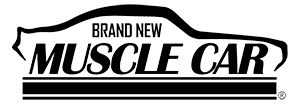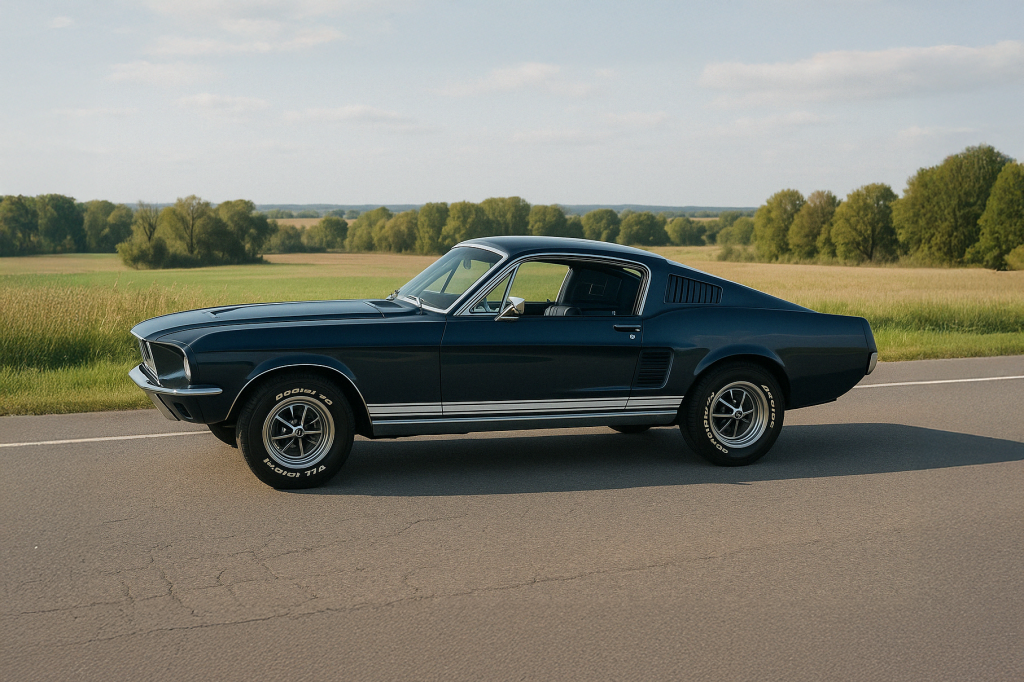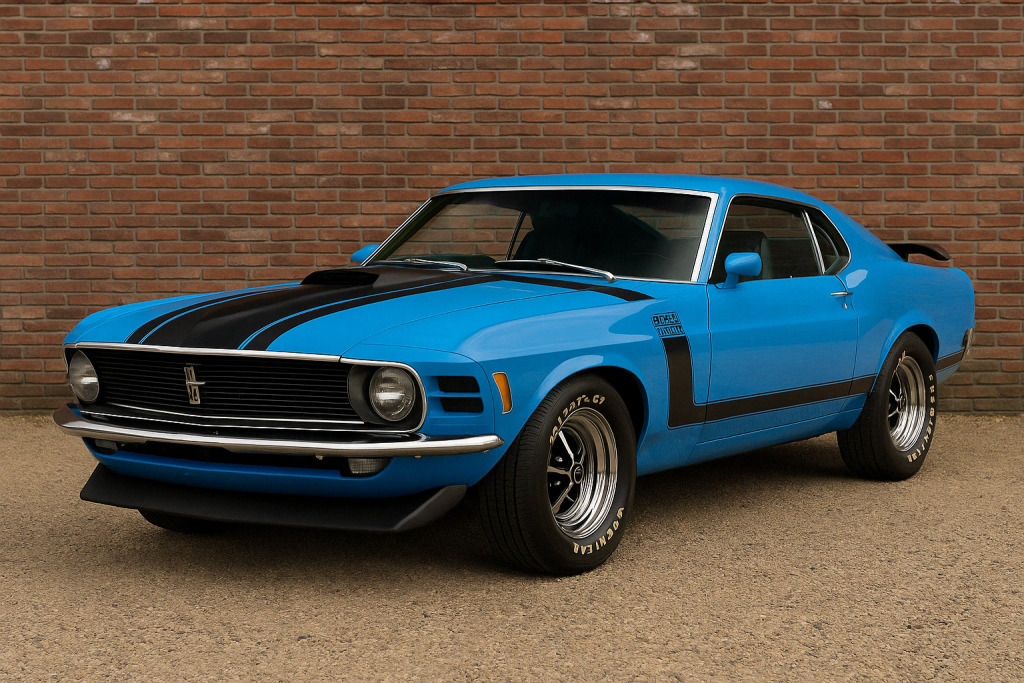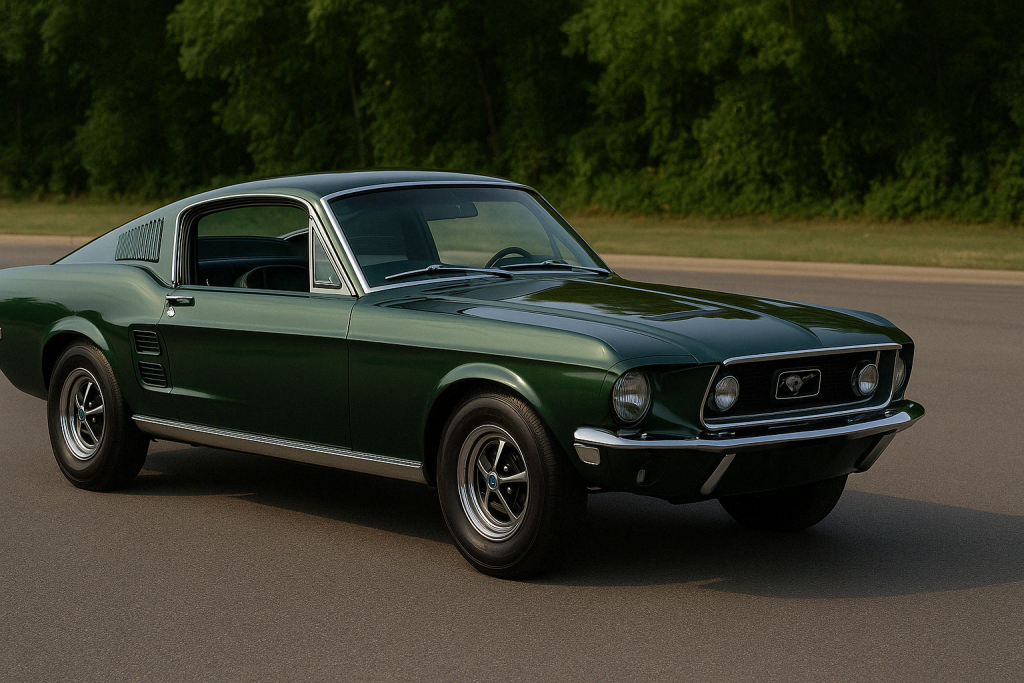When you talk about the peak of American musclecar madness, the 1970 Boss 429 Mustang always finds its way into the conversation—and for good reason. Built with a monster under the hood, tuned for the track, and dripping with attitude, the Boss 429 wasn’t just a Mustang—it was Ford flexing its high-performance muscle in a serious way.
If you’re into big-block beasts, NASCAR history, or just rare Detroit iron that turns heads wherever it goes, this car is a certified legend. Let’s take a ride back to 1970 and talk about what makes the Boss 429 one of the most revered Mustangs ever produced.
The Origins of the Boss 429 Mustang
The Boss 429 wasn’t born out of a desire to create a new street Mustang. Nope, this musclecar was built with a very specific mission: to homologate a high-performance engine for NASCAR racing. Ford needed to push their 429 cubic-inch semi-hemispherical engine into competition, and NASCAR rules required that the engine be available in a production car.
So, Ford dropped it into the Mustang—a car it wasn’t originally designed for. The result? One of the most aggressive Mustangs ever made. But the installation wasn’t simple. The 429 engine was so massive that the standard Mustang engine bay couldn’t handle it. That’s where Kar Kraft, a Ford contractor based in Brighton, Michigan, came in.
Kar Kraft essentially redesigned the front end of the car to accommodate the engine. This included modifying the shock towers and relocating components to make everything fit. Only a limited number of these Mustangs were built, making each one incredibly rare and highly collectible today.
What Made the 1970 Model Year Special?
While the Boss 429 debuted in 1969, the 1970 model year brought subtle but important changes. First off, the 1970 Boss 429 received a cleaner front-end design with single headlights and a more refined grille. It also wore a sleeker hood scoop, which gave the car a slightly more understated (but still intimidating) look compared to the massive scoop on the ’69 model.
One of the standout visual cues of the 1970 version? Color. You could get the Boss 429 in bold hues like Grabber Green, Grabber Blue, Calypso Coral, and other wild shades that screamed performance. These vibrant colors, paired with Magnum 500 wheels and a low, wide stance, made it obvious that this was no ordinary pony car.
Let’s Talk Engine: The Big-Block Beast
At the heart of the Boss 429 Mustang was—of course—that monstrous engine. Officially rated at 375 horsepower, the 429 V8 was widely believed to be underrated by Ford. Real-world figures suggested it could make well over 500 hp with the right tuning.
This wasn’t just any big-block either. It featured an aluminum intake manifold, large port cylinder heads, solid lifters, and a Holley 4-barrel carb. The engine was backed by a 4-speed manual transmission, which was the only transmission option. A Hurst shifter made gear changes feel tight and aggressive—just like they should in a car like this.
Though it wasn’t built for drag racing like some other musclecars of the era, the Boss 429 offered serious straight-line speed and unmatched street presence.
Handling Like a Musclecar Should
You might think with a giant engine up front, the Boss 429 would be a handful in the corners. And yeah, it wasn’t exactly a ballerina—but Ford did put some thought into the chassis.
It came standard with a competition-style suspension, front disc brakes, power steering, and a 3.91 Traction-Lok rear axle. While not as nimble as its Trans-Am sibling, the Boss 302, the Boss 429 was still one of the better-handling big-block musclecars of its time.
Built by Kar Kraft, Prized by Collectors
Only 499 units of the 1970 Boss 429 Mustang were built, making it even rarer than the already-limited 1969 run. Each vehicle was built at Ford’s Dearborn plant and then shipped to Kar Kraft for the conversion process.
Because of the custom work and low production numbers, original Boss 429 Mustangs fetch sky-high prices today. It’s not uncommon to see them go for $300,000 or more at auctions—especially if they retain matching numbers and rare factory options.
A Musclecar That Stood Apart
What makes the 1970 Boss 429 so iconic isn’t just the rarity or the raw performance—it’s the total package. It represents a unique blend of engineering, purpose, and presence. This wasn’t a Mustang made for grocery runs or weekend cruises (though you could do both with enough gas). This was a Mustang built to bend the rules of racing and performance.
The Boss 429 stood apart from the standard GTs and Mach 1s. It didn’t carry stripes all over the body or wild spoilers—it let its bulging hood, wide fenders, and rumbling exhaust do the talking.
Final Thoughts: Why It Still Matters
Today, the Boss 429 Mustang holds a mythical place in the musclecar hall of fame. It’s not just a showpiece—it’s a reminder of what automakers were willing to do in the name of speed and competition. Every detail, from the hand-built modifications by Kar Kraft to the growl of the big-block under the hood, tells a story of horsepower, ambition, and attitude.
If you ever get a chance to see a 1970 Boss 429 in person—especially in Grabber Green—stop and admire it. Because you’re not just looking at a car. You’re looking at a rolling chapter of American performance history.



